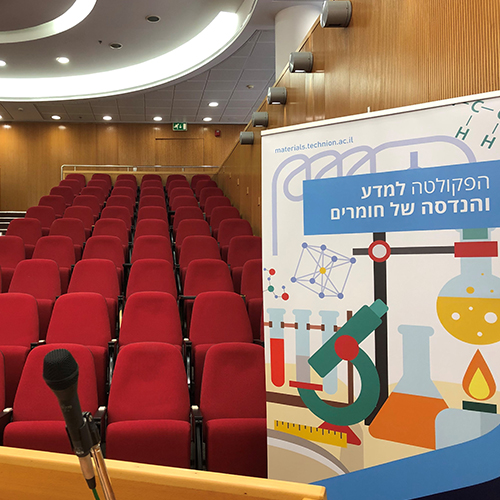
Ms. Chenxin Wei - M.Sc. Candidate
12/02/2025
ZOOM
12:30 - Jerusalem time / 18:30 - Beijing time
Thermoelectric (TE) materials have attracted considerable attention for their unique ability to convert heat into electricity and vice-versa. Among potential materials, (Bi1-xSbx)2Te3 (BST-x) is considered to be one of the most efficient groups of TE materials near room temperature. Our preliminary investigation of BST-x compounds under ambient pressure revealed enhancement of the figure of merit (ZT) with a value reaching around 1 for BST-0.8 at 350 K.
To further explore their potential, we carried out a high-pressure study for BST compounds. Previous research on the Bi2Te3 and Sb2Te3 end members, indicates that both materials follow similar structural evolution and at higher pressures they adopt a disordered solid solution BCC (A2) structure at 14.4 and 21.6 GPa, respectively. We carried out a systematic structural study of BST-0.2, 0.7 and 0.9 under pressure to determine the effects of Sb concentration on the critical pressures for the corresponding phase transitions. Moreover, we examined the possible existence of a pressure-induced electronic topological transition (ETT) for the ambient phase. According to Hume-Rothery law, substitution between Sb and Te should be easier than that between Bi and Te atoms, but the experimental results show the opposite trend. The reason for this is still not well understood. Additionally, in-situ high-pressure electrical measurement on BST-0.7 shows pressure-driven bandgap suppression and a semiconductor to metal transition. These findings offer insight in optimizing the TE performance of the material through high pressure.


